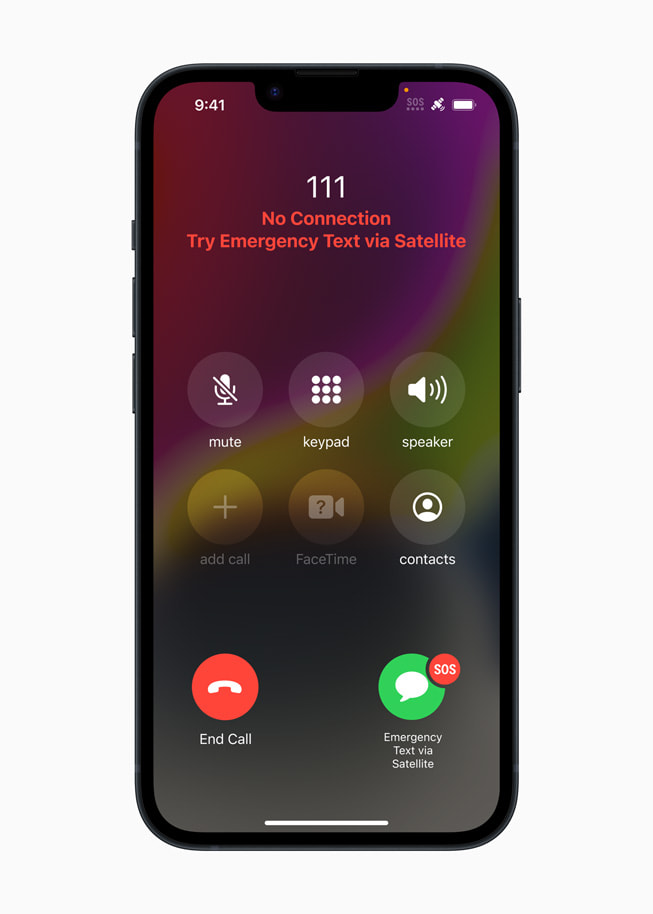UPDATE
15 May 2023
Emergency SOS via satellite available today on the iPhone 14 line-up in New Zealand and Australia
iPhone 14 users can now connect with emergency services when cellular and Wi-Fi coverage are not available
Apple’s groundbreaking safety service Emergency SOS via satellite is available starting today for customers in New Zealand and Australia. Available on all iPhone 14 models, the innovative technology enables users to message with emergency services while outside of cellular and Wi-Fi coverage. Additionally, if users want to reassure friends and family of their whereabouts while travelling in an area with no cellular or Wi-Fi coverage, they can now open the Find My app and share their location via satellite.
Every model in the iPhone 14 line-up — iPhone 14, iPhone 14 Plus, iPhone 14 Pro and iPhone 14 Pro Max — can connect directly to satellite through a combination of custom-designed hardware components and deeply integrated software. Emergency SOS via satellite builds on existing features vital to iPhone users, including Emergency SOS, Medical ID, emergency contacts and Find My location sharing, offering the ability to connect to a satellite to share critical information with emergency services, family and friends. This game-changing service connects users to relay centres staffed with Apple-trained emergency specialists who are ready to contact Public Safety Answering Points (PSAPs) — or emergency services call centres — on the userʼs behalf to get them the help they need. Since launching last year, Emergency SOS via satellite has already helped save lives in the 12 countries where it has been available. The service is free for two years starting at the time of activation of a new iPhone 14 model.1
How Emergency SOS via Satellite Works
iPhone can already quickly and easily call emergency services if a user is in need of help, even if they are unable to dial 111, by pressing and holding the side button with one of the volume buttons until the Emergency SOS slider appears. With Emergency SOS via satellite, an easy-to-use interface appears on iPhone to get the user help utilising a satellite connection if they are not able to reach emergency services because no cellular or Wi-Fi coverage is available. A short questionnaire appears to help the user answer vital questions with a few simple taps, which are transmitted to dispatchers in the initial message, to ensure they are able to quickly understand the userʼs situation and location. Apple worked closely with experts to review standard questions and protocols to identify the most common reasons for calling emergency services.
Following the questionnaire, the intuitive interface guides the user where in the sky to point their iPhone to connect and send the initial message. This message includes the userʼs questionnaire responses; location, including altitude; iPhone battery level; and Medical ID, if enabled. The transcript with relay centre specialists can also be shared with the userʼs emergency contacts to keep them informed.2
Satellites move rapidly, have low bandwidth and are located more than a thousand kilometres away from Earth, so it can take a few minutes for even short messages to get through. Apple designed and built custom components and software that allow iPhone 14 to connect to a satelliteʼs unique frequencies without a bulky antenna. A text compression algorithm was also developed to reduce the average size of messages by 3x, making the experience as fast as possible. With Emergency SOS via satellite, users can send and receive messages in as little as 15 seconds in clear conditions.3 Using the built-in Emergency SOS via satellite demo, users can test satellite connectivity on their iPhone by connecting to a real satellite in range without contacting emergency services, allowing them to experience the process and familiarise themselves with the service.
For users who go out of cellular or Wi-Fi range but donʼt experience an emergency, this advanced technology also enables them to share their location via satellite with Find My. In the Find My app, users can open the Me tab, swipe up to see My Location via Satellite, and tap Send My Location. The satellite connection on the iPhone 14 line-up also works with other safety features available on iPhone and Apple Watch, including Crash Detection and Fall Detection.
Availability
- New Zealand and Australia join Austria, Belgium, Canada, France, Germany, Ireland, Italy, Luxembourg, the Netherlands, Portugal, the UK and the US, where Emergency SOS via satellite and Find My via satellite are currently available.
- Emergency SOS via satellite and Find My via satellite require iOS 16.4 or later.
Share article
Media
-
Text of this article
-
Images in this article
- The service will be included for free for two years starting today or at the time of activation of a new iPhone 14, iPhone 14 Plus, iPhone 14 Pro and iPhone 14 Pro Max.
- Up to 10 emergency contacts using iOS 16.4 or later and iMessage will see the userʼs location, type of emergency and a live transcript of their conversation with emergency services. Emergency contacts who are not on iPhone, and iPhone users who arenʼt using iOS 16.4 or later or iMessage, will see the userʼs location and type of emergency. The user can opt to stop sharing their information with an emergency contact at any time. In order to reach the relay centre or dispatcher closest to the user, location information will also be shared with Apple.
- Connection and response times vary based on location, site conditions and other factors. See support.apple.com/en-nz/HT213426 for more information.









